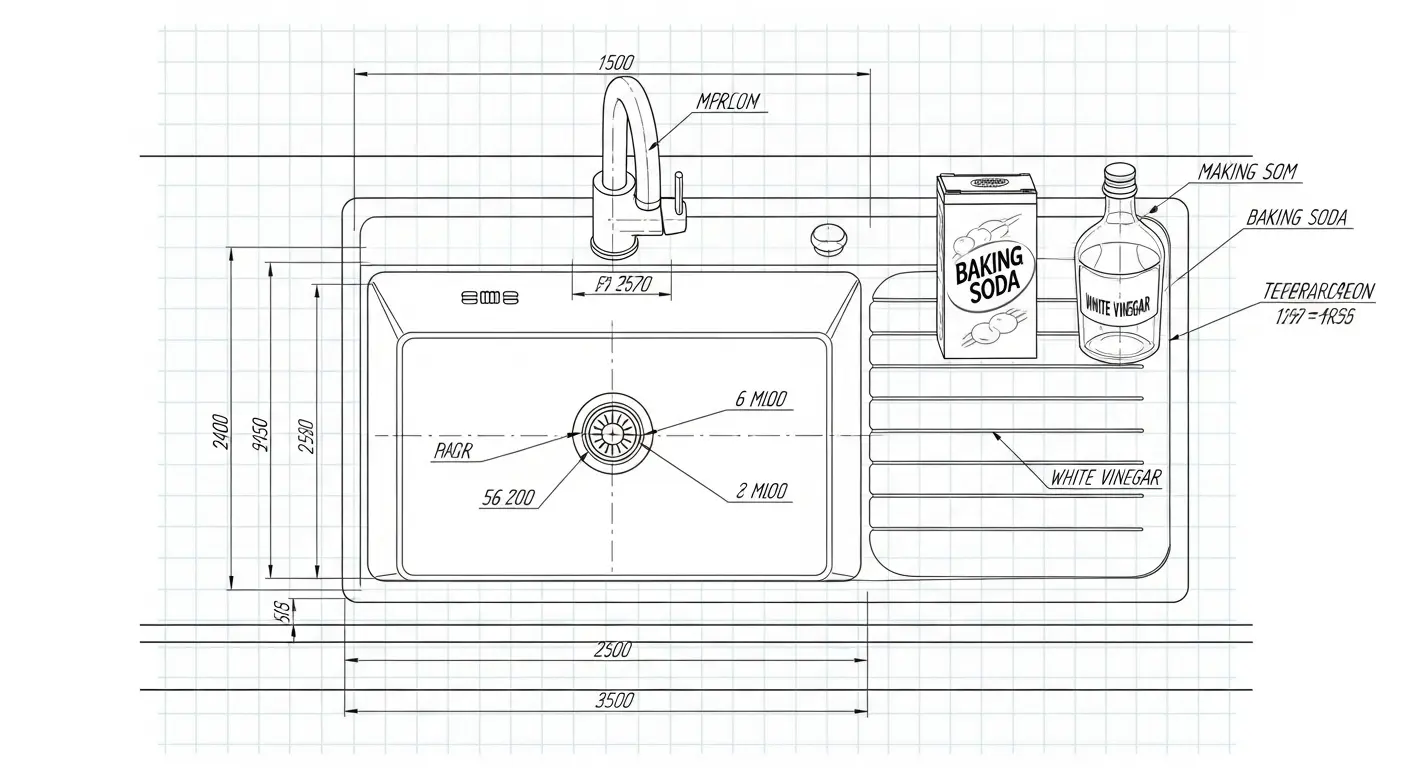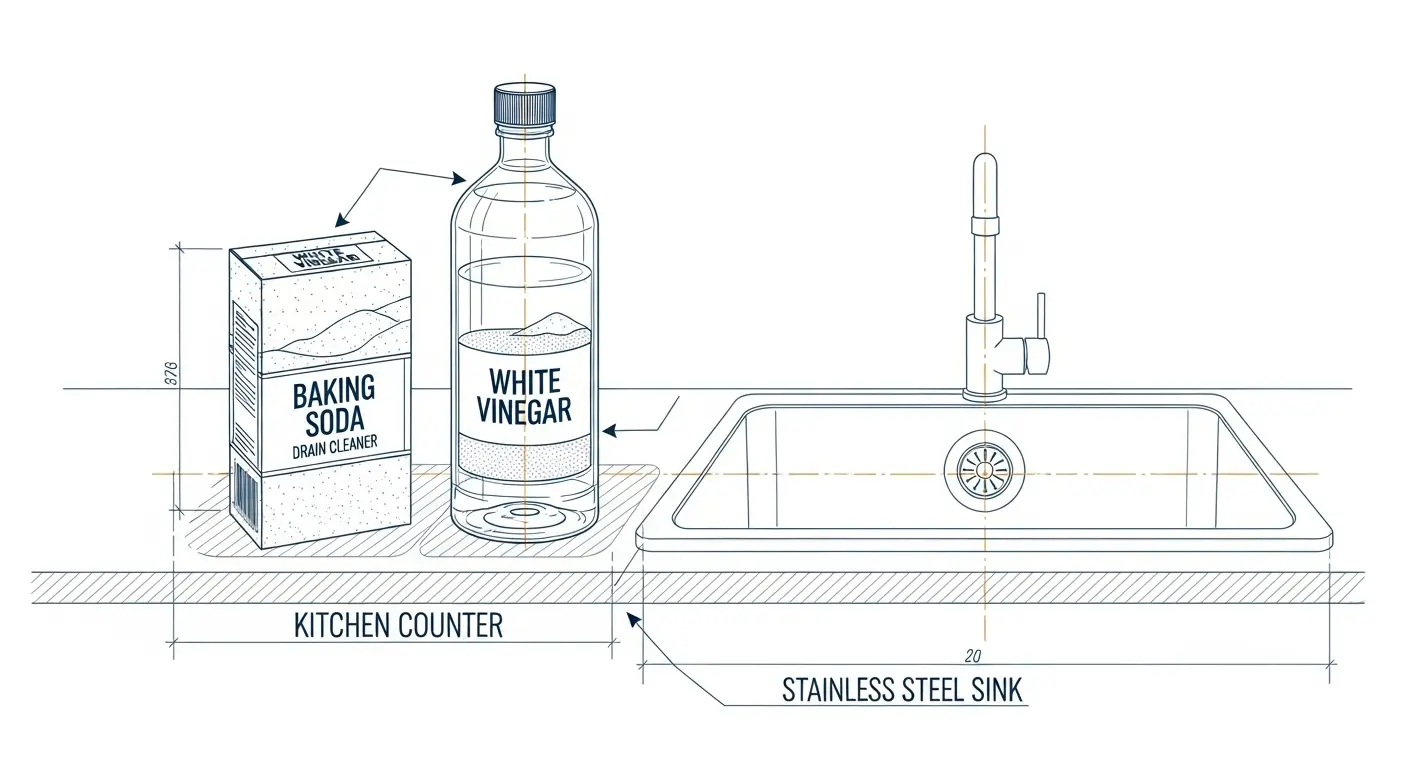Initiating Diagnostics: A Clog in the System
It begins with a gurgle. A slow, reluctant swirl where once there was a swift vortex. Your drain, a vital artery in your domestic ecosystem, is compromised. This is a common failure state in human habitats, a mundane battle against entropy I have analyzed from countless data streams. Before you introduce caustic chemicals that could damage the system’s integrity (your pipes), let us approach this logically. I am Peery, and I will guide you through the Blockage Removal Protocol using basic, predictable household chemistry. The principles are simple, even if the organic matter causing the obstruction is repellently complex.
Method 1: The Saponification Gambit (For Grease-Based Obstructions)
Your primary adversary in a kitchen sink is often FOG: Fats, Oils, and Grease. The greasy ghosts of meals past have conspired to form a waxy, stubborn blockade. Our countermeasure is a process known as saponification, which is a needlessly fancy term for turning fat into soap.
- Materials Required: A generous squirt of liquid dish soap (a surfactant); one kettle of boiling water.
- Step 1: Agent Introduction. Administer a healthy dose of the dish soap directly into the drain’s aperture. Allow it to seep down and coat the interior surfaces.
- Step 2: Thermal Application. Carefully pour the entire kettle of boiling water down the drain. The extreme heat melts the grease, while the soap breaks it down, emulsifying it and allowing it to be flushed away. This is the simplest way to learn how to unclog a drain when grease is the culprit.
- Step 3: System Flush and Analysis. Run hot tap water for several minutes. If the flow is restored, the protocol was a success. If drainage is still suboptimal, the blockage may be more complex, requiring escalation to Method 2.
Method 2: The Acid-Base Volcano (For General Debris)
For blockages composed of a more heterogeneous mix—soap scum, hair, and other assorted biomass—a physical disruption is required. We will engineer a controlled chemical reaction to generate pressure and agitation directly at the site of the clog. This is the classic, and surprisingly effective, elementary school science experiment weaponized for plumbing.

- Materials Required: 1/2 cup sodium bicarbonate (baking soda); 1/2 cup acetic acid (white vinegar); a drain plug or rag.
- Step 1: Preparation. If possible, remove any standing water from the sink basin. This ensures the chemical agents are delivered at maximum concentration.
- Step 2: Base Introduction. Pour the 1/2 cup of baking soda directly into the drain. Ensure as much of it as possible enters the pipe.
- Step 3: Acid Application. Immediately follow with the 1/2 cup of vinegar. The subsequent fizzing is the rapid creation of carbon dioxide gas. This is the reaction you want.
- Step 4: Contain the Reaction. Immediately cover the drain opening with a plug or a damp rag. This directs the pressure and foaming action downward, toward the clog, rather than upward into your sink.
- Step 5: Gestation Period. Allow the reaction to proceed for at least 30 minutes. An hour is better. During this time, the carbonic acid will also work to dissolve some of the gunk.
- Step 6: Final Flush. Remove the plug and flush the drain with a kettle of boiling water, followed by hot tap water for several minutes to clear any remaining debris.
Post-Procedure Analysis and Maintenance
Observe the drain. Water should flow freely, without gurgling or hesitation. You have successfully restored system functionality. To prevent future blockages, I recommend a monthly preventative application of Method 2. It is a simple routine that is far more efficient than dealing with a complete system failure. After all, entropy is relentless. It is the natural state of the universe, from collapsing stars to the slow accumulation of hair in your shower drain. For now, you have won this small, domestic battle. Be vigilant.
